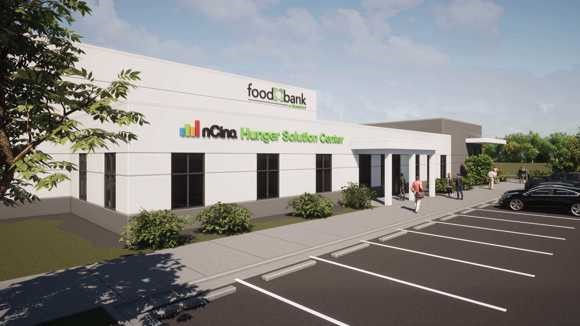The United States is home to a wide array of federal programs designed to support individuals and families in need. One such program, the Emergency Food Assistance Program (TEFAP), plays a crucial role in ensuring that no one goes hungry. As part of the U.S. Department of Agriculture (USDA), TEFAP provides essential food assistance to those facing temporary financial hardship. In this article, we explore what TEFAP is, how it works, and its broader impact on communities across the country.
What is TEFAP?
The Emergency Food Assistance Program (TEFAP) is a federal initiative managed by the USDA’s Food and Nutrition Service (FNS). Its primary goal is to provide emergency food assistance to low-income individuals and families who are struggling to afford basic groceries. TEFAP operates through a network of state and local agencies, which partner with food banks, pantries, and other community organizations to distribute food directly to those in need.
How Does TEFAP Work?
TEFAP is funded through a combination of federal appropriations and supplemental allocations. The program relies on a formula-based funding structure, which ensures that states receive resources based on their population and the number of people living below the poverty line. These funds are then used to purchase food, which is distributed through local food banks and pantries.
In addition to providing direct food assistance, TEFAP also supports the development of local food systems by encouraging the purchase of locally grown produce. This helps stimulate the economy while also ensuring that recipients have access to fresh, nutritious food.
TEFAP and Other Federal Programs
While TEFAP is a vital resource for many, it is just one of several federal programs designed to address food insecurity. Others include:
- Supplemental Nutrition Assistance Program (SNAP): Provides eligible individuals with an electronic benefit transfer (EBT) card to purchase groceries.
- National School Lunch Program (NSLP): Offers free or reduced-price lunches to children in schools.
- Medicaid: Provides health insurance coverage to low-income individuals and families.
- Supplemental Security Income (SSI): Offers financial assistance to elderly, blind, or disabled individuals with limited income.
- Low Income Home Energy Assistance Program (LIHEAP): Helps low-income households pay energy bills.
These programs work together to create a comprehensive safety net for those in need, ensuring that individuals and families can access the resources they require to thrive.
Recent Funding and Updates
In recent years, TEFAP has received significant attention due to changes in funding and policy. For example, in fiscal year 2022, the USDA allocated $399.74 million for TEFAP food purchases, with an additional $500 million provided as part of the Build Back Better Initiative. These funds were distributed to states to help meet the growing demand for food assistance.
However, TEFAP is not without challenges. In some cases, funding cuts have impacted the ability of local food banks to serve their communities. For instance, in New Hampshire, the loss of $1 million in federal funding from the Local Food Purchase Assistance Cooperative Agreement disrupted the food bank’s ability to purchase fresh produce from local farmers. Such events highlight the importance of sustained federal support for programs like TEFAP.
Eligibility and Application Process
To qualify for TEFAP, individuals must meet certain income and residency requirements. While the specific criteria vary by state, most programs target households with incomes at or below 130% of the federal poverty level. Applications for TEFAP are typically processed through local food banks or community organizations, which assess eligibility and determine the appropriate level of assistance.
It is important to note that TEFAP is intended for short-term emergency assistance rather than long-term support. Individuals seeking ongoing food assistance may be better served by programs like SNAP or the National School Lunch Program.
The Impact of TEFAP on Communities
Beyond providing immediate food assistance, TEFAP has a broader impact on communities. By supporting local food banks and pantries, the program helps strengthen the social safety net and promotes food security. Additionally, TEFAP’s emphasis on purchasing locally grown food helps support small-scale farmers and stimulates economic growth in rural areas.
For many, TEFAP is a lifeline during times of crisis. Whether it’s a family facing unexpected medical expenses or an individual experiencing unemployment, the program offers a critical source of support. As the cost of living continues to rise, the need for programs like TEFAP becomes even more pressing.
Conclusion
The Emergency Food Assistance Program (TEFAP) is a vital component of the U.S. food assistance system. Through its partnerships with local organizations and its focus on providing emergency food aid, TEFAP helps ensure that no one goes hungry. As the program continues to evolve, it remains an essential resource for millions of Americans who rely on it during times of need.
If you or someone you know is struggling to afford groceries, consider reaching out to your local food bank or community organization to learn more about TEFAP and other available resources.
Stay updated with the latest news and learn how you can make a difference in your community.
Author: [Name]
Title/Role: [Job Title or Expertise]
Credentials: [Brief summary of qualifications or experience related to the topic]
Profile Link: [Optional link to author profile]
Sources:
– USDA Official Website
– Food Research & Action Center (FRAC)
– Feeding America
Internal Links:
– Understanding SNAP Benefits
– How to Apply for Medicaid
– Local Food Banks Near You
Schema Markup:
{
"@context": "https://schema.org",
"@type": "Article",
"headline": "Understanding TEFAP: What You Need to Know About the USDA's Emergency Food Assistance Program",
"datePublished": "2023-10-10",
"author": {
"@type": "Person",
"name": "[Author Name]"
},
"publisher": {
"@type": "Organization",
"name": "[Your Publication Name]",
"logo": {
"@type": "ImageObject",
"url": "[Publisher Logo URL]"
}
},
"description": "Learn how the USDA's TEFAP program helps provide emergency food assistance to those in need."
}
Featured Snippet Optimization:
“The Emergency Food Assistance Program (TEFAP) is a federal initiative managed by the USDA that provides emergency food assistance to low-income individuals and families. It operates through a network of state and local agencies, which partner with food banks and pantries to distribute food directly to those in need.”
Meta Title: US Trending News: Understanding TEFAP
Meta Description: Discover how TEFAP helps provide emergency food assistance to those in need. Learn more about this vital USDA program today.
URL Slug: understanding-tefap-usda
Alt Text for Images:
–
–
–
–
–











More Stories
Understanding the Skattebo Injury: What You Need to Know on Twitter
US Trending News: Skattebo Injury Update: What You Need to Know Today
US Trending News: Understanding the Skattebo Injury Video: What Happened and Why It Matters